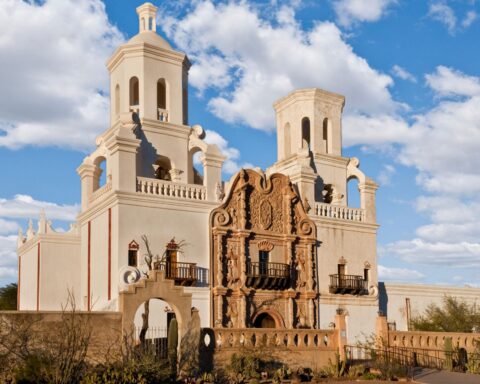The cross is perhaps the most recognized symbol of Christianity, representing the crucifixion and resurrection of Jesus Christ. It holds a deep historical significance within the faith, carrying a profound theological and cultural impact. In this blog post, we will explore the rich historical roots of the cross in Christianity, its evolution as a symbol, and its enduring importance to believers worldwide.
The Early Symbolism of the Cross:

The origins of the cross as a symbol in Christianity can be traced back to the first century AD. During the time of Jesus, crucifixion was a common form of execution, reserved for the most heinous crimes. Jesus, as the central figure of the Christian faith, was crucified on a cross, signifying the ultimate sacrifice for the redemption of humanity’s sins. The cross became an iconic representation of Jesus’ crucifixion and resurrection, embodying the core principles of Christianity – love, forgiveness, and salvation.
Throughout history, icons and religious artifacts have played a significant role in the practice of Christianity. Today, icons for sale can be found in many Christian communities, serving as tangible reminders of faith and symbols of reverence. Icons, often painted on wood or depicted in other forms, hold immense spiritual and devotional significance for believers. These sacred images serve as windows to the divine, facilitating a deeper connection with the spiritual realm.
Throughout the early years of Christianity, the cross held both religious and political significance. Believers gathered in secret to worship and celebrate the message of Christ, often using the cross as a covert symbol of their faith. In the face of persecution, the cross became a potent symbol of defiance and unwavering devotion.
The Evolution of Cross Symbolism:

As Christianity spread across different regions, the cross began to assume various forms and designs, reflecting cultural influences and artistic expressions. One of the most recognizable forms is the Orthodox cross, characterized by its distinct shape and symbolic elements.
The Orthodox cross, also known as the Eastern cross, features three horizontal beams. The top beam represents the sign that Pilate placed on the cross, declaring Jesus as the King of the Jews. The slanted lower beam represents the footrest, while the longer vertical beam signifies the crossbar on which Jesus was crucified. This unique design distinguishes the Orthodox cross from other cross variations, emphasizing its specific theological and historical connotations.
The Significance of the Cross Today:

In contemporary Christianity, the cross continues to be an enduring symbol of faith and a powerful reminder of Jesus’ sacrifice. Christians wear cross pendants, display cross artwork in their homes, and often make the sign of the cross during prayer and worship. The cross has transcended its historical context, resonating with believers across time and cultures.
Beyond its religious symbolism, the cross has also become a cultural icon, recognized even by those who do not adhere to the Christian faith. It represents concepts such as hope, redemption, and the triumph of good over evil. The cross has found its way into art, literature, music, and popular culture, leaving an indelible mark on society at large.
The Martyrdom of Early Christians:
The historical significance of the cross in Christianity is closely intertwined with the martyrdom of early Christians. During the Roman Empire’s persecution of Christians, believers faced immense challenges and threats to their faith. Many Christians bravely faced death rather than renounce their beliefs, often being crucified on crosses. These martyrs became symbols of unwavering devotion and inspired generations of believers to embrace the cross as a sign of their faith. The cross, therefore, serves as a reminder of the sacrifices made by early Christians and their steadfast commitment to their beliefs.
The Cross as a Symbol of Hope and Healing:

In addition to its theological significance, the cross holds deep symbolism in the context of healing and hope. The vertical beam of the cross represents the connection between God and humanity, while the horizontal beam symbolizes the connection between individuals. Through Jesus’ crucifixion and resurrection, the cross becomes a beacon of hope, offering healing and reconciliation to a broken world. It serves as a reminder that no matter the struggles or challenges one faces, there is always the possibility of redemption and restoration. The cross, therefore, becomes a source of solace and comfort for believers, reminding them of God’s unconditional love and grace.
Cross Controversies and Debates

Cross controversies and debates have been present throughout the history of Christianity, as the symbol of the cross has faced various challenges and objections. This section explores the historical conflicts, modern controversies, and Christian responses to these issues.
Historical conflicts and debates surrounding the cross symbol
Early Christian persecution: The cross symbol became a target of persecution during the Roman Empire, as Christians were often crucified or martyred for their faith.
Iconoclastic controversies: In the Byzantine Empire, there were debates over the veneration of religious images, including the cross, leading to periods of iconoclasm where crosses were destroyed.
Protestant Reformation: During the Reformation, some Protestant groups objected to the use of religious symbols, including the cross, arguing for a simpler form of worship.
Modern controversies and objections to the use of the cross
Secularism and atheism: In increasingly secular societies, the use of religious symbols, including the cross, is sometimes seen as inappropriate or offensive.
Interfaith dialogue: The cross symbol can be a point of tension in interfaith dialogue, particularly when non-Christian religious groups express concerns about its dominance in public spaces.
Cultural appropriation: Some argue that the cross has been commercialized and used inappropriately outside of its religious context, leading to debates about cultural appropriation and commodification.
Christian responses to controversies and the defense of the cross

Apologetics: Christian apologists have engaged in intellectual and philosophical defenses of the cross, addressing objections and presenting arguments for its significance.
Interfaith dialogue and respect: Christians engage in respectful conversations with individuals of other faiths, seeking to understand their concerns and promote mutual understanding.
Emphasizing the deeper meaning: Christians often highlight the spiritual and theological significance of the cross as a symbol of love, redemption, and sacrifice, countering objections with the core message of their faith.
Conclusion:
The historical significance of the cross in Christianity is deeply rooted in the crucifixion and resurrection of Jesus Christ. It stands as a powerful symbol of love, sacrifice, and salvation, embodying the core principles of the Christian faith. From its early clandestine usage to its enduring presence in contemporary Christianity, the cross continues to inspire and unite believers around the world.




